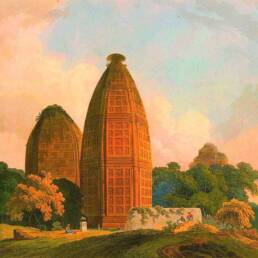With the recent India-Canada rift, the haunting shadow of the Komagata Maru and Canada’s once racist immigration laws looms large. Yet, from that history, one Canadian hero has been forgotten – a lone warrior who battled white supremacists on behalf of 376 Indians.
It was a voyage from Hong Kong to Canada that represented hope and the promise of a new life. But for the 376 passengers aboard the ship, that promise would be met with hostility, discrimination, and ultimately, forced deportation.
On May 23, 1914, SS Komagata Maru, made its way into Vancouver’s harbor. Its passengers, all prospective immigrants, held dreams of settling in Canada. Onboard were 337 Sikhs, 27 Muslims and 12 Hindus. All from Punjab.
However, they were not welcomed with open arms; instead the citizens met them with clenched fists. Canada, then, was a far cry from today. The prevailing racial prejudices and exclusionary sentiments of the time stirred a wave of hostility against these newcomers.
Before the Komagata Maru’s arrival, the Canadian government had already implemented restrictive immigration policies targeting South Asians. In 1907, 10,000 people in Vancouver protested against Indian immigration, leading to riots in Chinatown and Japanese Town. Those were dark times.

Defying these policies, a Sikh businessman, Gurdit Singh, charted the Komagata Maru, aiming to challenge the discriminatory restrictions. He believed that he and his fellow passengers had a right to enter Canada. Yet, their aspirations clashed with reality.
Immigration officials denied the ship entry, leaving passengers isolated onboard without contact with the South Asian community ashore. As days turned into weeks, the passengers had barely any access to food and water. The situation became more grim.
During such adversity, the local South Asian community raised significant funds, and sought legal representation to challenge the unjust immigration laws. But who would fight for them? Who could stand toe-to-toe with the bureaucratic behemoth and the systemic racism?
A man emerged from the bustling streets of Vancouver. He carried a reputation for his razor-sharp intellect that had conquered many battles in the courtroom. As he quietly prepared to face the storm, the Indian immigrants found hope in the unlikeliest of places.
He was Edward Bird. A man of few words. In a time when civil rights were a mere whisper amid the clamor of discrimination, Bird’s unwavering dedication shone brightly. He stood guard, protecting the vulnerable from the storm of injustice.
Bird joined the Socialist Party of Canada and there he formed connections with leaders of the immigrant Sikh community of British Columbia, offering them legal support. He was a voice for the voiceless, an advocate for those who could not advocate for themselves.
Back in the early 1900s, diversity, as we know it today in Canada, was almost non-existent. The nation was on a mission to maintain its white identity, dead set on keeping Asians out. Bird, although had a radically different view.
With time, the quarantined passengers endured personal and financial hardships that only compounded their suffering. Yet, their resilience shone through, and they held on to the hope that justice would prevail.
In a bold move the previous year, Edward Bird secured a victory against the government, allowing 39 Indian immigrants aboard another ship Panama Maru to land in Canada. Conservatives dubbed it a “Hindu (Sikh) invasion. And they were deeply worried that Bird might turn the table again.
Bird and his counsel were given very little time and just one brief opportunity to speak to a passenger from another boat, closely monitored by guards. It was a lost battle. Despite his best efforts, deportation orders were ultimately issued.
Finally, on that fateful day of July 23, 1914, they were forced to return to the land they had left behind. The dream of a better life shattered, replaced by the stark reality of systemic racism and prejudice. But the story does not end there.
When the S.S. Komagata Maru made its way back to Budge Budge in Calcutta, on September 29, 1914, tragedy struck. British Indian forces, acting on the misguided belief that the returning passengers were revolutionaries, opened fire.
It was a massacre, a brutal and senseless act that claimed the lives of more than twenty passengers, with many more injured. Over two hundred others were imprisoned without charge, and many were forced into exile.
In Canada, Bird and his family faced a barrage of threats from racist citizens and bureaucrats. Even his life insurers abandoned coverage. Bird is then believed to have escaped the city. He paid a price for standing up for what is right, a price for a liberal world.
Sources:
John McLaren, Pooja Parmar, Lawyers in the ‘Slammer’ and in Hiding: The Pitfalls of Advocating for Unpopular Causes at the British Columbia Bar, 1900-1925, https://themanitobalawjournal.com/wp-content/uploads/articles/MLJ_43.1%20(Special%20Issue)/431_McLarenParmar.pdf
MICHAEL BIRD, Behind the Komagata Maru’s fight to open Canada’s border, The Globe and Mail, https://www.theglobeandmail.com/news/british-columbia/komagata-maru-100-years-later/article18830049/
Hugh J. M. Johnston,The Voyage of the Komagata Maru: The Sikh Challenge to Canada’s Colour Bar, UBC Press
Image Attributes:
Leonard Frank, Sikh Men and Boy Onboard the Komagata Maru, May 23 to July 23, 1914, Leonard Frank collection, Vancouver Public Library
South Asian Canadian Digital Archive, https://sacda.ca/exhibits/km/index.php




